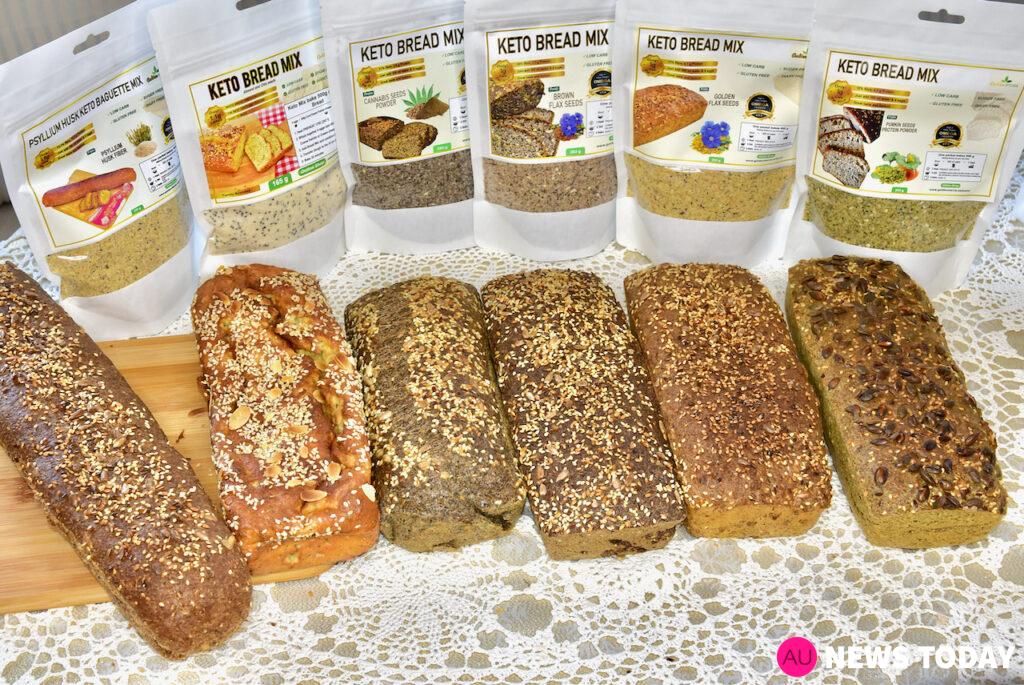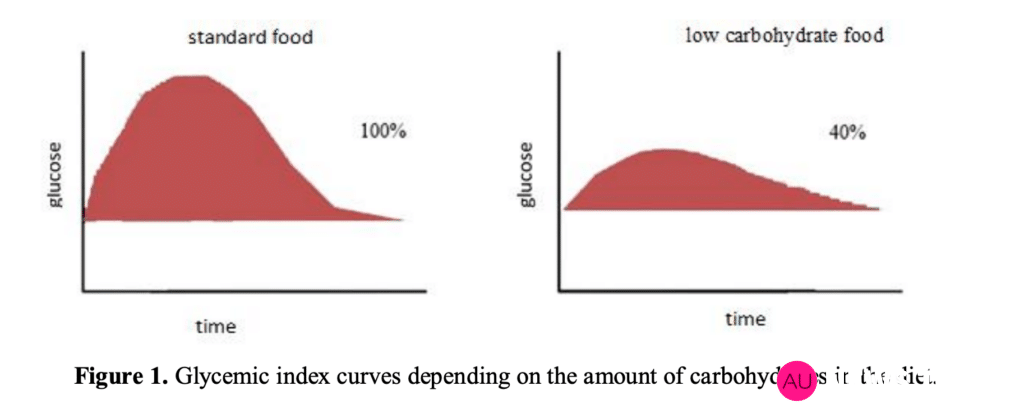We can summarize that the Ketogenic Diet is a more effective dietary therapy for patients with type 2 diabetes. Annika Urm is sugar free, low-carb, keto diet specialist.
Annika Urm’s daughter has been living with type 1 diabetes since the age of 5. With over 13 years of experience. Annika has come to the evidence-based conclusion that a low-carbohydrate diet is crucial for individuals with diabetes. Additionally, the author’s grandfather suffered from type 2 diabetes with severe complications, including leg amputation.
Currently enrolled in nursing studies at Tallinn Health Care College, Annika Urm provides scientifically proven dietary recommendations, recipes, baking mixes, and food products. Her offerings have been validated for several decades. Yet the question arises: why is this approach not more widely adopted? Specifically, why aren’t healthcare professionals and individuals with diabetes embracing these strategies?
Annika Urm has authored two cookbooks, “SUKRUVABA” (Sugar-Free) and “SUKRUVABA.JÖJULUD,” (Sugar-Free. Christmas) providing evidence-based solutions for incorporating low-carbohydrate and/or keto diets into daily life. She has also developed a product line of 24 keto-baking mixes, including 10 for white and black bread. It is making it easier for people to prepare low-carb and keto-friendly meals at home. Also, there are solutions for rice and pasta.
Science-based Low Carb diet for diabetes
Diabetes mellitus (DM) has become a worldwide public health burden and a significant cause of motility and morbidity. The most common type of diabetes is type 2 diabetes, which is estimated to have a prevalence of one in every ten adults living with diabetes in the United States. (Zaki et al., 2022).
Large post-meal glucose peaks are associated with increased risk of diabetic complications and cardiovascular disease (Pearce et al., 2008).
Increased post-meal blood sugar and insulin spikes are thought to worsen diabetes and independently elevate the risk of atherosclerosis and obesity. Numerous connections have been identified between post-meal events and diabetes-related complications.
Minimizing post-meal blood sugar and insulin reactions is crucial for diabetes prevention and management. Therefore, efforts to reduce these spikes are fundamental to diabetic patient care, potentially lowering the risk of cardiovascular complications.(Slama et al., 2006).
From a metabolic point of view, low calorie (LCD) diets with low carbohydrate content (20–120 g of carbohydrates/day), which provide 1,000–1,200 calories per day, are indicated in the treatment of obesity as they promote a reduced increase in insulin and an increase in glucagon, which generates greater oxidation of fats.
Low calorie diets below 30–50 g of carbohydrate content that causes ketosis and mimics the physiologic state of fasting are called ketogenic: Low Calorie ketogenic diet (LCKD).(Sukkar & Muscaritoli, 2021).
Diabetes mellitus type 2
The risk factors for type 2 diabetes are obesity and being overweight. Therefore, the primary strategy used to manage type 2 diabetes is weight loss. The primary strategy that can be used to manage T2DM is weight loss, which can be achieved using dietary therapy, preferably combined with physical training.(Zaki et al., 2022).
Low-carbohydrate diets have gained popularity because of their effect on weight loss, improvement of glycated heamoglobin (HBA1c), and reduction or cessation of medication.
High-carbohydrate diets compared to low-carbohydrate diets showed that low-carbohydrate diets significantly improved HBA1c among adult patients with T2DM compared to high-carbohydrate diets. (Zaki et al., 2022).
Current uplevel dietary strategies to manage type 2 diabetes are ketogenic and low-carbohydrate diets. Despite studies showing that both ketogenic and low-carbohydrate diets significantly impact weight and glycemic control, the difference between the two diets has not been fully established. (Zaki et al., 2022).
The results show that the ketogenic diet (KD) is more effective in reducing glycated haemoglobin and body weight (BW) than a low-carbohydrate diet. Therefore, this systematic review has demonstrated and compared the effectiveness of ketogenic and low-carbohydrate diets on glycemic and weight control. The results show that the KD is more effective in reducing glycated haemoglobin and body weight (BW) than a low-carbohydrate diet. (Zaki et al., 2022).
We can summarize that the KD is a more effective dietary therapy for patients with type 2 diabetes (Zaki et al., 2022).
This systematic review suggests that both ketogenic and low-carbohydrate diets produce significant differences in HbA1c levels, which is a measure of glycemic control. However, comparing the effects of ketogenic and low-carbohydrate diets on glycemic control, it is evident that KDs had a significant reduction in HbA1c values compared to low-carbohydrate diets. This difference can be attributed to the fact that glycemic control mostly depends on the degree of carbohydrate restrictions. The results also show that a significant weight loss is observed in patients subjected to KDs compared to those subjected to low-carbohydrate diets. (Zaki et al., 2022).
Fat is not a problem!
Carbohydrate restriction shows promise for diabetes but concerns regarding high saturated fat content of low-carbohydrate diets limit widespread adoption (Ebbeling et al., 2022).
A low-carbohydrate diet, high in saturated fat, improved insulin-resistant dyslipoproteinemia[1] and lipoprotein(a), without adverse effect on LDL cholesterol. Carbohydrate restriction might lower cardiovascular disease (CVD) risk independently of body weight, a possibility that warrants study in major multicentered trials powered on hard outcomes.(Ebbeling et al., 2022).
Diabetes mellitus type 1
Nowadays very low carbohydrate diet (VLCD) should be routinely proposed to diabetes mellitus type 1(DM1) patients as an alternative nutritional plan. This retrospective study has shown safe and effective when adopted under tight medical control with a proper adjustment in insulin therapy. (Kleiner et al., 2022).
An eucaloric very low carbohydrate diet (EVLCD) is a dietary regimen where daily caloric intake matches the total daily energy expenditure (TDEE), while restricting carbohydrate consumption to less than 50 grams per day. Although the available literature on very low carbohydrate diets (VLCD) for type 1 diabetes (DM 1) is limited, recent scientific studies have increasingly demonstrated their safety and effectiveness in managing DM 1. Notably, these studies have reported no instances of severe hypoglycemia or ketoacidosis. The findings of this research support the idea that implementing EVLCD in individuals with DM 1 can be a safe and effective approach when done under close medical supervision.(Kleiner et al., 2022).
Ketosis is completely unlike diabetic ketoacidosis. (Sukkar & Muscaritoli, 2021).
Ketogenic diets
Ketogenic diets (KD) results in improved HbA1c already after 3 weeks, and the effect seems to persist for at least 1 year. This is associated with a reduction in glucose-lowering medications. The weight loss observed after a short period seems to be maintained with a long-term diet. Adequate support (supportive psychological counseling, enhancing positive affectivity, reinforcing mindful eating) is necessary to achieve a benefit and to assure adherence. (Tinguely et al., 2021).
Fasting
Recent preclinical studies have shown the positive effects of so-called fasting mimicking diets (FMDs) in various experimental models of tumors, diabetes, Alzheimer’s Disease, and other morbid conditions.
Apart from the physiological fasting, many treatments have tried over time to achieve the benefits that the fasting condition produces. The basic purpose of fasting is to promote changes in metabolic pathways, cellular processes, and hormone secretions. The major physiological responses of fasting on health indicators include better insulin sensitivity, improved blood pressure levels, reduced body fat, blood sugar, atherogenic lipids, and inflammation.
In the animal model, fasting is associated with interesting outcomes in correcting type 2 diabetes and cardiovascular disease.
In humans, 12–24 h of fasting are associated with a significant 20% reduction in blood glucose and hepatic glycogen depletion. Under these conditions, the transition to ketogenic metabolism occurs.
Intermittent fasting is the most cited among these methodologies and consists of abstaining from food and calorie drinks for a certain period of time. for example, hourly food restriction (e.g., 16: 8). (Sukkar & Muscaritoli, 2021).

Implementation
The management of type 2 diabetes mellitus (T2D) needs lifestyle modifications and science-based guidelines and recommendations by international diabetes societies.
Nutrition therapy guidelines often emphasize a reduction in the excessive amounts of carbohydrates, as well as limiting fat intake to 20–35% of total calorie intake, with a focus on a decrease in saturated fats.
KD and LCD propose to reduce the carbohydrate intake even more drastically, in combination with a higher intake of fats, which become the most important source of calories.
These regimens are referred to as ketogenic diets (KD) as they result in ketosis secondary to severe carbohydrate restriction (<50 g/day) and the excess of free fatty acids.
This combination induces a radical change in energy metabolism with an increase in fatty acid oxidation in the liver and the production of ketone bodies.(Tinguely et al., 2021).
KD seems a promising dietary intervention for the improvement of the glycemic control in patients with T2D. KD should be accompanied with a structured support by dieticians and dedicated physicians to avoid adverse effects and to adjust glucose-lowering medications. Moreover, intensive support optimizes long-term adherence, which seems to be key to success. (Tinguely et al., 2021).
But no matter how good the effect of a balanced diet is, it is not always acceptable due to the presence of bad eating habits. It is the eating behavior that forms the very frame on which health rests.(Sevostyanova et al., 2020).
The study investigating the association between low-carbohydrate diet (LCD) patterns and mortality among individuals with type 2 diabetes found that greater adherence to LCD patterns was significantly associated with lower total, cardiovascular, and cancer mortality. (Hu et al., 2023).
According to research conducted in Germany. Food prices are a relevant factor for healthy food choices. Diets with reduced carbohydrate content are considerably more expensive, limiting their use for people with low income. (Kabisch et al., 2021).
Flaxseed bread for therapeutic nutrition
Bread has been a very important traditional food for a long time. Flaxseed bread is low in carbohydrates and has very little effect on blood sugar. Flaxseed bread is delicious and can be easily adapted to everyday meals. (Sevostyanova et al., 2020).

Figure 1. A study showed what the glycemic curve looks like in people after consuming high and low-glycemic index foods. Low glycemic index food has a 60% flatter curve. (Sevostyanova et al., 2020).
Flaxseed bread alters the glycemic response curve by reducing dietary carbohydrate intake and influencing metabolic processes. This slight post-meal glucose level adjustment enables the utilization of ketone bodies, which can readily cross the blood-brain barrier and provide nourishment to nerve tissue. Ketogenesis, employing lipids and proteins as energy sources, allows for hormonal balance adjustments. Research outcomes demonstrate the beneficial impact of low-carbohydrate diets on disease progression, along with significant improvements in body weight. (Sevostyanova et al., 2020).
Love for bread and its dishes leads to daily fluctuations in both glucose concentration and the body’s metabolism. Therefore, the development of a product that will be possible to integrate into the diet and which will meet modern ideas about the balance of nutrients is relevant. (Sevostyanova et al., 2020).
Adjusted flaxseed bread’s nutritional value will allow us to integrate this product into a low-carb diet, which is especially important for people suffering from diabetes and metabolic syndrome. The number of bread units (XE) in the developed samples is also optimal and lower than that of the corresponding analogs. These numerical parameters will reduce insulin intake in people with diabetes. (Sevostyanova et al., 2020).
Flaxseed breads are also gluten-free, sugar-free, a dairy-free. (Sevostyanova et al., 2020).
Summary
Vascular complications of diabetes are common in young individuals, leading to a high risk of morbidity and mortality. Prevention is of critical importance, considering risk factors such as blood sugar control, obesity, hypertension, dyslipidemia, and lifestyle factors. Improvement can be achieved through appropriate diabetes technology, a multidisciplinary team approach, and health education. Screening for complications is crucial, as identifying and initiating treatment for adolescents in the at-risk group is essential before irreversible changes occur.
The author finds based on science-based research that a high-carbohydrate diet leads to increased average blood sugar levels, weight gain, and diabetes-related complications.
It is crucial to start implementing low-carb and ketogenic diets in diabetic’s DM1 and DM2 everyday lifestyle. Flaxseed flour is good for baking low-carb food.

Article source:
About Author Annika Urm https://annikaurm.com
Annika Urm is a mother of two, sugar-free, Low Carb and Keto nutrition specialist, author of two cookingbooks SUGAR-FREE and SUGAR-FREE.CHRISTMAS, entrepreneur, international journalist, medical student, volunteer diabetic counselor, nutritionist, educator and much more. He has over 200,000 followers worldwide.
News page https://news.annikaurm.com
Annika Urm SUGAR FREE cookbooks (still only in Estonian soon will be translated)
“Sukruvaba” (Sugarfree) is the first book in Estonia that teaches how to make sugar- and gluten-free, low-carb, keto diet and diabetes-friendly meals together in one book.
How to understand what the keto diet is and what food is good for diabetics?
The low carb numbers show! The numbers of the carbohydrate content in the food speak for themselves. The special feature of the book is the calculation of carbohydrates with each recipe. All foods contain 2-7 g of carbohydrates per 100 g (except plum jam, apple cake).
The second recipe book “Sukhruvaba.JÕULUD” (Sugar free.Christmas) teaches how to make sugar- and gluten-free and Low Carb Christmas food. In this book, you will find Low Carb recipes for gingerbread, blood sausages, cinnamon buns and many other favorite Christmas foods. In addition, wonderful winter dishes such as snowball soup, pumpkin bisque and shirataki pasta are also made before and after Christmas.
This cookbook contains really healthy recipes that are Sugar Free, Low Carb, Keto Diet & Diabetic Friendly! And it’s a breeze to measure! The numbers show! The special feature of the sugar-free book is that there are carbohydrate calculations for each food! Carb numbers are what change the whole game! Most desserts contain 1-7 g of dietary fiber (carbohydrates) per 100 g.
The KETO baking mix product line Golden Stevia is created by Annika Urm.
Annika Urm has created Keto Low Carb healthy and delicious bread baking mixes!
1 slice of bread (33g) = 1-2 g of SV Carbohydrates! Lots of good fiber and good fats!
“I use all these dietary supplements as ingredients in my prescriptions, which are otherwise offered as dietary supplements in capsules! My products contain Psyllium Husk, Konjac Root Glycomannan Powder, Omega 3, Flaxseed Meal, etc!” – Annika Urm
For healthy people, functional food!
Golden Stevia Keto Baking Mixes are healthy and easy to use yourself.
Diabetes and Keto Diet Friendly: Gluten Free, Sugar Free, Low Carb, Keto
Here you can find all 24 g KETO, Low Carb baking mixes:
10 different of bread mix, white, black, crispy and crusty breads.
Pancake baking mix
Baking mix for cinnamon buns
Pizza baking mix
Hamburger Bun baking mix
Almond cookies
Linseed cookies
Cake base powder
Taco Tortilla
Shortbread mix
Baking mixes for muffins or cupcakes
In addition, keto muesli, nut-cocoa, strawberry-coconut are also available.
GOLDEN STEVIA LOW CARB ONLINE SHOP! https://goldenstevia.com/shop/
Europe delivery, fast and secure!
You can find all the Golden Stevia Keto Baking Mixes here:
Golden Stevia Keto Bakery Over 100 sugar-free products in one place in ESTONIA ONLY!
Shirataki spaghetti, noodles, rice, pasta, fettuccini – diabetes, keto diet friendly, low carb, gluten free
References
Ebbeling, C. B., Knapp, A., Johnson, A., Wong, J. M., Greco, K. F., Ma, C., Mora, S., & Ludwig, D. S. (2022). Effects of a low-carbohydrate diet on insulin-resistant dyslipoproteinemia—a randomized controlled feeding trial. The American Journal of Clinical Nutrition, 115(1), 154–162. https://doi.org/10.1093/ajcn/nqab287
Hu, Y., Liu, G., Yu, E., Wang, B., Wittenbecher, C., Manson, J. E., Rimm, E. B., Liang, L., Rexrode, K., Willett, W. C., Hu, F. B., & Sun, Q. (2023). Low-Carbohydrate Diet Scores and Mortality Among Adults With Incident Type 2 Diabetes. Diabetes Care, 46(4), 874–884. https://doi.org/10.2337/dc22-2310
Kabisch, S., Wenschuh, S., Buccellato, P., Spranger, J., & Pfeiffer, A. F. H. (2021). Affordability of Different Isocaloric Healthy Diets in Germany—An Assessment of Food Prices for Seven Distinct Food Patterns. Nutrients, 13(9), 3037. https://doi.org/10.3390/nu13093037
Kleiner, A., Cum, B., Pisciotta, L., Cincione, I. R., Cogorno, L., Prigione, A., Tramacere, A., Vignati, A., Carmisciano, L., & Sukkar, S. G. (2022). Safety and Efficacy of Eucaloric Very Low-Carb Diet (EVLCD) in Type 1 Diabetes: A One-Year Real-Life Retrospective Experience. Nutrients, 14(15), 3208. https://doi.org/10.3390/nu14153208
Pearce, K. L., Noakes, M., Keogh, J., & Clifton, P. M. (2008). Effect of carbohydrate distribution on postprandial glucose peaks with the use of continuous glucose monitoring in type 2 diabetes. The American Journal of Clinical Nutrition, 87(3), 638–644. https://doi.org/10.1093/ajcn/87.3.638
Sevostyanova, N. N., Pchelina, E. A., Vihrova, M. A., Trezorova, O. Y., & Andreeva, L. V. (2020). Flaxseed bread for therapeutic nutrition. IOP Conference Series: Earth and Environmental Science, 613(1), 012137. https://doi.org/10.1088/1755-1315/613/1/012137
Slama, G., Elgrably, F., Kabir, M., & Rizkalla, S. (2006). Role of Low-Glycemic-Index Foods in Improving Overall Glycemic Control in Type 1 and Type 2 Diabetic Patients and Correcting Excessive Postprandial Hyperglycemia. Hormone and Metabolic Research, 38(7), 465–468. https://doi.org/10.1055/s-2006-948134
Sukkar, S. G., & Muscaritoli, M. (2021). A Clinical Perspective of Low Carbohydrate Ketogenic Diets: A Narrative Review. Frontiers in Nutrition, 8. https://doi.org/10.3389/fnut.2021.642628
Tinguely, D., Gross, J., & Kosinski, C. (2021). Efficacy of Ketogenic Diets on Type 2 Diabetes: a Systematic Review. Current Diabetes Reports, 21(9), 32. https://doi.org/10.1007/s11892-021-01399-z
Zaki, H. A., Iftikhar, H., Bashir, K., Gad, H., Samir Fahmy, A., & Elmoheen, A. (2022). A Comparative Study Evaluating the Effectiveness Between Ketogenic and Low-Carbohydrate Diets on Glycemic and Weight Control in Patients With Type 2 Diabetes Mellitus: A Systematic Review and Meta-Analysis. Cureus. https://doi.org/10.7759/cureus.25528
More published articles all over the world!










